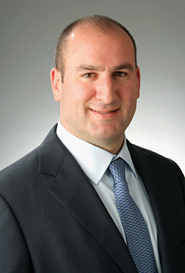Looking to raise its profile in U.S. equities, Canadian-based BMO Capital Markets has expanded its research and trading with the addition of almost two dozen hires.

All the new hires have been in the U.S., all in research sales and trading. BMO plans to upgrade its U.S. business by strengthening both areas.
Jack Blackstock, BMO’s co-head of equity research, said the firm has long prided itself on its research. Past acquisitions include Nesbitt Thomson in 1987, Burns Fry in 1994 and Gerard Klauer Mattison in 2003. Blackstock will guide the latest expansion with help from Alan Tannenbaum, BMO’s head of U.S. equity sales.
"Our Canadian research and equities departments have been high-profile for decades," Blackstock said. "The U.S. businesses haven’t."
Tannenbaum acknowledged the need to not only have good research, but also a skilled trading desk, in order to move up the broker lists at money managers. Research is "the basis of our relationship with the buyside," he said. "It’s also critical that we have a strong trading capability."
And competition is stiff. A number of international firms have expanded their U.S. equities groups. Firms such as Japan’s Nomura, Australia’s Macquarie and France’s Société Générale have all made efforts to expand their research and trading in the U.S. In order to be considered a global firm, they recognize they need a significant U.S. presence.
BMO has 31 analysts in the U.S. It has another 37 in Canada. The firm covers about 930 publicly traded companies total. In the U.S., it covers 515.
Trading has also expanded in the last year, or so. BMO’s U.S. trading effort started with 40 people and has grown to 50. The goal is 60. It hired senior people from UBS, JPMorgan, BofA Merrill Lynch and Barclays, Tannenbaum said.
BMO plans to offer algorithms to clients, but is unclear whether they will be an in-house or white-label product. The firm offers program trading and commits a "significant" amount of capital to its customer base of long-onlys and hedge funds, Tannenbaum said. It has also built out its flow options and derivatives businesses over the course of this year, and has made significant investments in its equity finance and prime brokerage businesses.
For BMO to succeed, it will need to raise its profile among the top 200 U.S. institutions, Tannenbaum said. The firm’s objective is to move up those broker lists over the next three to five years.
One buyside trader whose firm likes BMO’s small-cap analysts said the firm’s strategy makes sense. "The more lists they get on, the more flow they see," the trader said. "And the more flow they see, the better the chance for capturing non-research flow, because of the flow they’re already in. This is why a lot of firms want to build out trading desks."
Tannenbaum, formerly global head of cash equity sales at Lehman Brothers, is one of four new hires. The three others are Rick Joyce, head of U.S. equity sales trading; Will Bertsch, head of U.S. equity facilitation trading; and Sean MacKenzie, head of U.S. equity electronic trading.
(c) 2010 Traders Magazine and SourceMedia, Inc. All Rights Reserved.
http://www.tradersmagazine.com http://www.sourcemedia.com/






